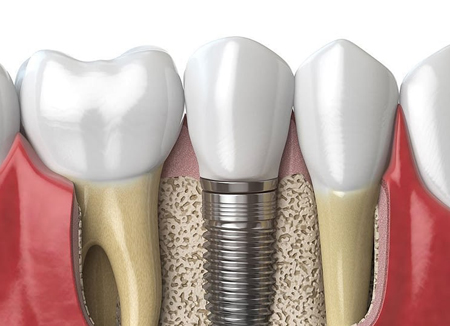Why Do I Have a Cavity Beneath My First Molar Crown?

I received three dental crowns in 2019. After my yearly exam, x-rays, and cleaning last week, my dentist said that the top left first molar crown has a cavity beneath it. I regret not getting a second opinion because last year, I mentioned to my dentist that I had a toothache on and off in the tooth, but she didn’t pursue it. Why do I have a cavity beneath a crown? I had a challenging appointment due to anxiety when I got the crowns, and I don’t want to think about getting a new one. Thanks. Elyssa from Arlington, VA
Elyssa,
It is unusual to find decay beneath a relatively new crown. Dr. Michalski would need to examine your crown and x-rays, but we will explain how decay can develop.
Why Do You Have a Cavity Beneath a Dental Crown?
Two reasons you may have a cavity beneath a dental crown include your dental history and the crown placement.
- Your dental history – People with a history of cavities may develop decay beneath a dental crown.
- The crown placement – If the margin where your crown and tooth meet is not smooth or has gaps, bacteria, plaque, and decay can thrive. If your dentist does not detect decay during your yearly exams and x-rays, the decay will progress, and you will begin to feel sensitivity and pain.
How Long Do Dental Crowns Last?
A well-made and precisely placed dental crown can last five to ten years. Insurance companies will not provide benefits for a replacement crown fewer than five years old. Most cosmetic dentists would be embarrassed to find decay beneath a crown they placed.
We recommend finding an advanced cosmetic dentist to examine your tooth, crown, and x-rays.
Will You Need a New Dental Crown?
If you have a cavity beneath a dental crown, a dentist must remove the crown and cavity. You may need a new crown. When you get a second opinion, ask the dentist about sedation options to help you relax during your procedure.
Dr. Thaddeus Michalski, a Rocky Hill, Connecticut dentist and Diplomate of the International Congress of Oral Implantologist, sponsors this post.
What Are the Types of Bone Grafting for Dental Implants?
Successful dental implant placement requires sufficient jawbone volume because your bone is the foundation for dental implants. When a tooth is missing, your body resorbs the surrounding bone and uses the minerals elsewhere in the body. If you have experienced jawbone shrinkage, you may need bone grafting to build up the bone before you get dental implants.
What Are the Types of Dental Implant Bone Grafting?
Types of bone grafting for dental implants include your bone, tissue-bank human bone, animal bone, mineral bone, and synthetic bone manufactured from proteins in the body.

- Your bone (autograft) – Your chin, hip, jaw, or tibia can be a source of bone for grafting into your jawbone. Harvesting bone from another site requires surgery. Some implant dentists or oral surgeons harvest tibia bone in the office while you are under IV sedation. Harvesting bone from your hip requires hospitalization. Autografts are the most effective bone grafting because your body adapts quickly.
- Tissue bank human bone (allograft) – Reputable tissue banks supply human cadaver bone. Tissue bank grafting is less expensive than autograft. Although tissue banks screen donors, you will have the risk of infection from donor tissue, as with a blood transfusion.
- Animal bone (xenograft) – Sterilized animal bone—most often from a cow—minimizes the risk of infection. Your body absorbs the bone over time and replaces it with your bone.
- Mineral bone substitute (alloplast) – Next to bone harvested from your body, synthetic bone is the safest means of grafting. Your body will eventually absorb and replace the bone with your bone tissue.
- Recombinant gene technology-derived protein – Proteins naturally found in the body are used to manufacture bone synthetically. The protein is FDA approved as an alternative to an autograft.
How Long Is Dental Implant Bone Graft Healing Time?
The bone grafting healing period can take four to nine months, depending on the graft used and how your body reacts to it. After it heals, your dentist or oral surgeon will perform dental implant surgery. In some cases, such as with tooth extractions, you may receive bone grafting and implants on the same day. Your implant dentist will explain your options for bone grafting and the outcome you can expect.
Rocky Hill, Connecticut dentist Dr. Thaddeus Michalski, sponsors this post.


